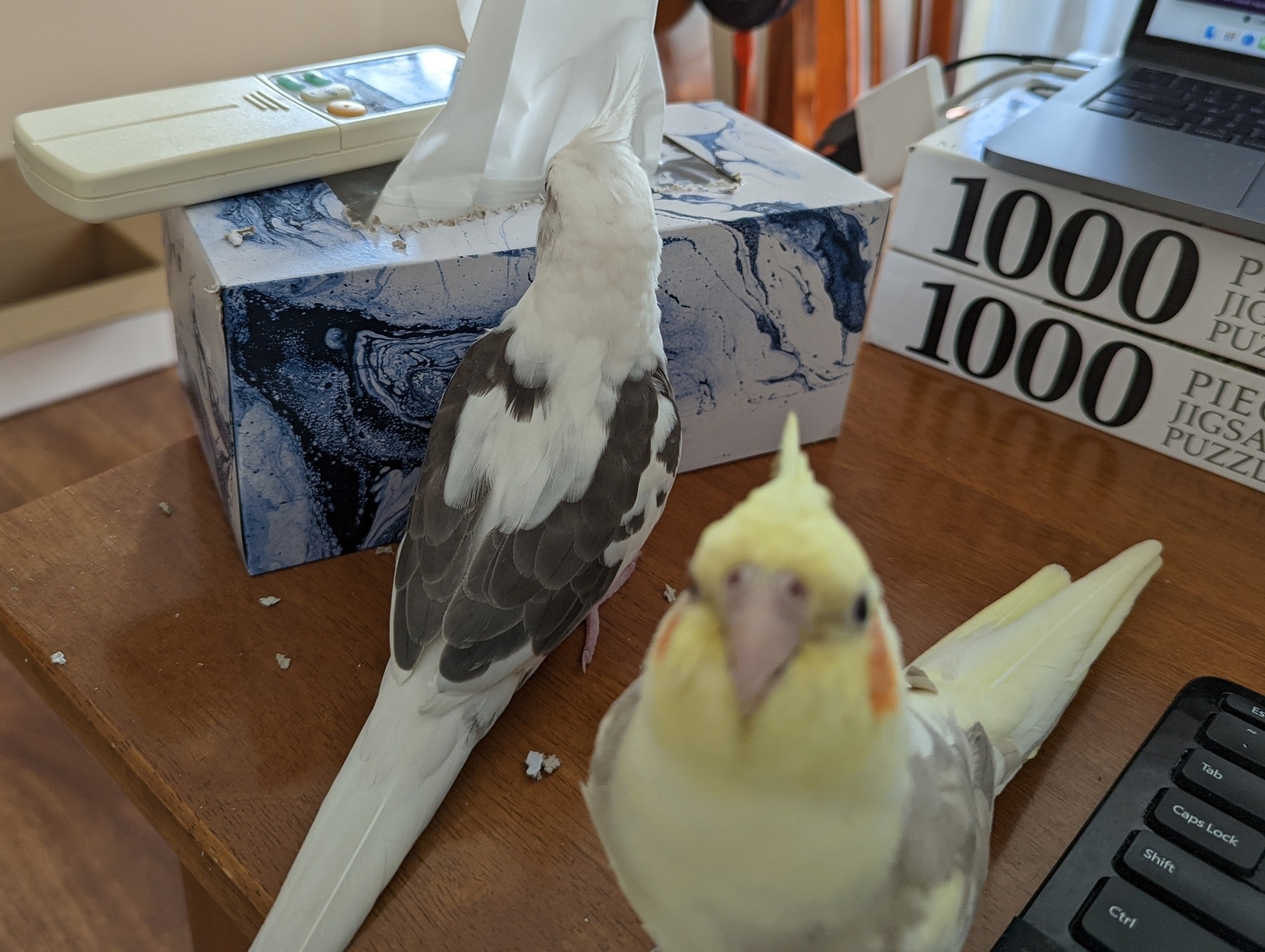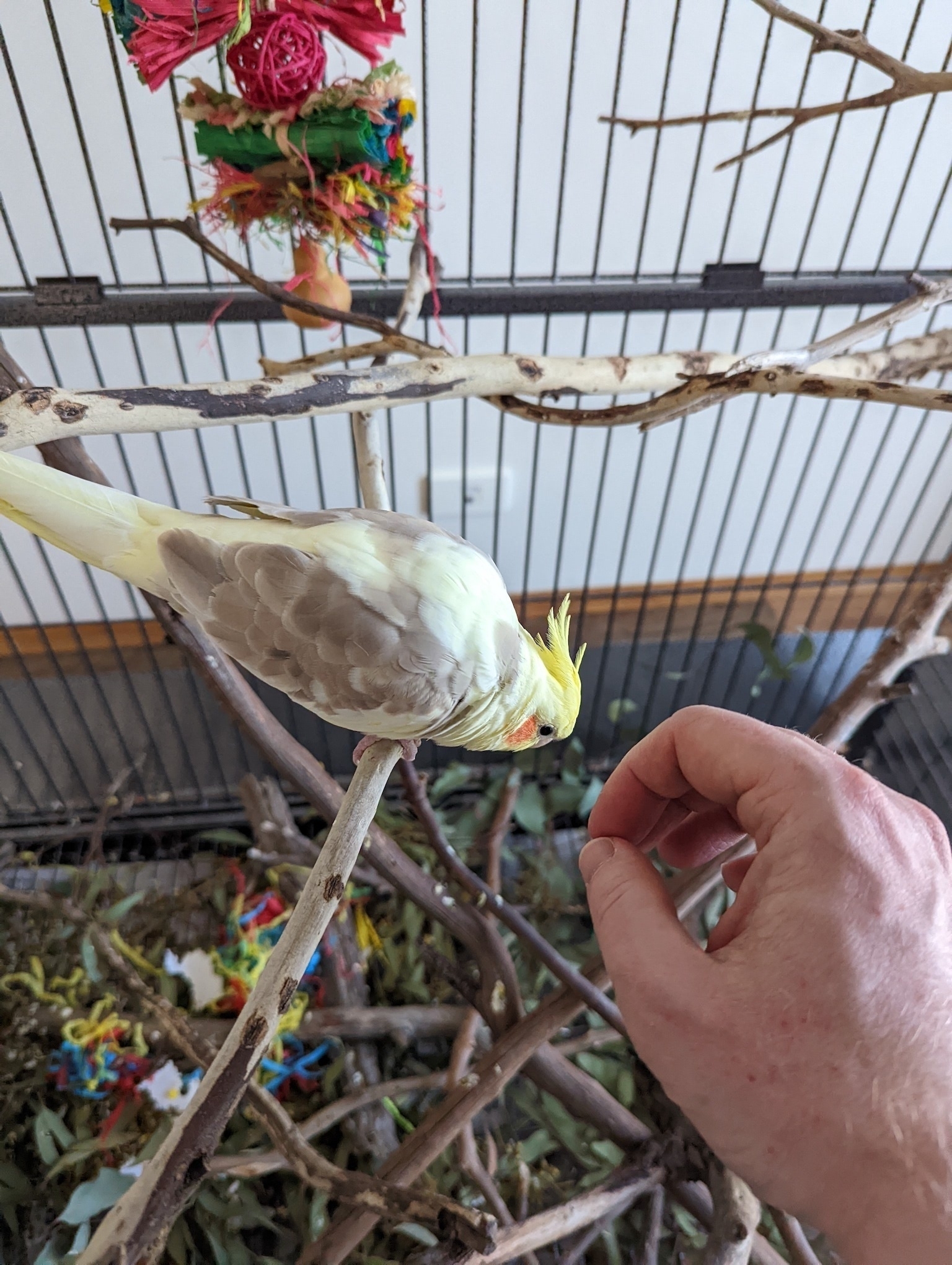-
Here’s an idea for a competitive sport: a race to see who can first merge two Git branches that have diverged significantly. The difficulty can dictate the number and types of conflicts that need to be resolve. Can also spice it up by breaking or not including unit tests.
-
Wrong Number
Got called three times this morning by mistake from an old woman in NSW trying to contact her son who had a very similar phone number to mine. First time I ignored it as I didn’t recognised the number and thought it was spam. Second time I answered and after trying to understand what she was trying to say, I simply said “I think you got the wrong number, sorry” and hung up. Continue reading →
-
List and Delete All Docker Containers
A useful command I occasionally use. This will list all Docker containers, and delete each one regardless of whether it’s running or not. Good if you use Docker for dev containers and need to reset your state. docker ps -a --format '{{.ID}}' | xargs -I{} docker rm -v {} EDIT: thanks to @sonicrocketman for suggesting another way to do this. Works just as well: docker ps -aq | xargs -I{} docker rm -vf {} Continue reading →
-
Idea for a website: you submit two TV shows or movies, and it shows you the cast members that are in both.
-
One fallout from Google’s terrible messaging situation is not just the fragmentation of all the various messaging “apps”, but the shoddy design and dev work that goes into each one.
Yesterday, I shared a video in Google Photos to my cousin. I wanted the video to be kept in it’s original quality, so I didn’t send it using MMS. I considered sending a link, but when I tapped “Share” to generate one, I saw the option to share it using some form of messaging app that exists in Google Photos (at least, I assumed it’s a messaging app, because what else would Google use).
I thought I’d give this a try, but I didn’t trust that the message would make its way to him. I’d hope at the very least it would send an email, so I naturally sent him an SMS asking whether he received it or not.
Turns out he did. In fact, he actually sent me a reply which… didn’t make its way to me. I got no notification, and I saw no reply in Google Photos. Didn’t even get an email.
Do people sharing photos in iOS have to deal with this?
-
I’ve been seeing something strange with an Android app I’ve built for myself. When I deploy it to my phone using Android studio; the app launches and I can start using it without any issues. But sometimes, after a few days have passed, the app gets replaced with a previous version, maybe one prior to the last version I built and deployed. I don’t spend a lot of time on this app so I cannot say if this happens regularly, but I have seen it happen two or three times this year already.
I wonder what could be causing this.
-
Getting spam emails with corrections about previously sent spam emails now. 😒
-
Here’s another photo of Archie and Ivy from a couple of weeks ago. Ivy’s discovered that the tissue box is the one thing nearby that I wouldn’t try to stop her chewing. Archie’s just curious in what I was using to take the photo.

-
Ugh, why do I even read the news? 😒
-
You know that feeling where you just got off on-call, and that evening there was a widespread production outage that you had no idea happened until the next day? That explains how my morning just started.
-
One thing I must remember: if the options before me are to go for a walk or not, very rarely is not going the better option. Sure, there are times where I can’t go for a walk: I’m busy, or not feeling too well. Those can’t be be helped. But that’s not the same as not feeling like going for a walk.
So when faced with this choice, the default should be to go.
I may feel no improvement.
I definitely won’t feel worse. I’ll usually feel better.
I rarely feel regret. -
Someone I worked with shared this tweet with a video of a musical number falling off the rails, which I found incredibly amusing. Enjoy.
P.S. I won’t do this too often.
-
Been watching The Orville a fair bit recently, on SBS On Demand. I must say that I like it a lot. I’m not a watcher of Star Trek, but — and some may not like what I’m about to say — it’s certaintly got the same sort of vibe.
-
Just enjoyed a set by Guy Montgomery in a familiar stomping ground (the Comedy Republic) with an unfamiliar Stomping Ground (the pale ale). All three were very enjoyable.

-
Heading back to Melbourne today after my 2.5 weeks in Canberra. Going to have to say goodbye to these two for a little while. Must say that my stay has been fun. Even though I’ve been working, it felt like a bit of a holiday.

-
Discovered the Causality podcast after listening to an episode of Reconcilable Differences. The subject matter — engineering disasters and what caused them — might be grim, but I think it’s helpful for people working in engineering, or software in that matter, to hear about them once in a while. After all, what we build will eventually be used by people, and the safety and usability of our creations can affect real lives.
-
Got blocked on how I to fix a problem encountered with the current task I’m doing for work. Always helpful to go back to the approach of “make it work, make it right, make it fast” in order to clear the blockage. May have generated a better way to actually do the task as well.
-
🔗 Internet Explorer was once synonymous with the Internet, but today it’s gone for good
So long, Internet Explorer. We sadly knew you all too well.
Worth pointing out that support for an “IE compatibility mode” won’t be removed from Edge until 2029, so can we really say that IE is dead?
-
Got to –4.5°C last night. As you can imagine, things were pretty frosty this morning.


-
Honour, Democracy, and Galati: A Day in Canberra
Since being in Canberra, I haven’t really done anything “touristy”. Given that today was a public holiday, I figured it was as good a time as ever to do so. So I decided to spend the day visiting a couple of national landmarks, plus something I’ve been planning to do since returning to Canberra. The War Memorial The first time I’ve ever been in Canberra was during Christmas holidays in 2007 my family. Continue reading →
-
Ivy’s discovered the vessel I drink from and wants in on it.

P.S. Ivy doing this actually reminds me of this post from @martinfeld.
-
I’m toying around with the idea of building something to help me upload multiple photos to Micro.blog and easily produce a gallery. I’m hoping for this thing to work in both Android and macOS. After watching a few Google IO sessions this year, I hear that Flutter can now build macOS applications, so that seems like the best framework to try. There’s even a package that offers macOS looking controls.
I took a brief look at the online demo and I’m quite impressed by how close they get to real macOS controls. Buts just like CGI faces, there’s a bit of an uncanny valley associated with them, in that they look so close to native macOS controls but it’s clear that they’re not.
I wonder whether it’s worth going with this control-set regardless, or whether it’s better leaning in to the fact that this won’t be a Mac-assed Mac app and going with something completely different.
-
Afternoon Walk Around Lake Ginninderra
Went for an walk around Lake Ginninderra this afternoon. Well, not “around” the lake: that walk would have taken a while. But I did walk along the path that would take me around the lake for about 30 minutes, then walked back again. Below are a few photos I took. Continue reading →
-
Archie loves head-scratches. In fact, when I reach my hand into the cage to let him out, he doesn’t immediately perch on it. Instead, he bows his head expecting me to scratch it.

-
My Evening
So here’s how I spent my evening: Watching the WWDC state of the union until the DNS resolver konked out in the WiFi router, causing the Chromecast to get into a state in which it could no longer connect to the network, resulting in about 10 minutes of troubleshooting before deceiding to clean up, not go to the gym, spend another 10 minutes trying to troubleshoot the issue, then stared at my laptop for about half an hour wondering whether to go back to troubleshooting the Chromecast, or doing something else with the hope that it would eventually work itself out. Continue reading →